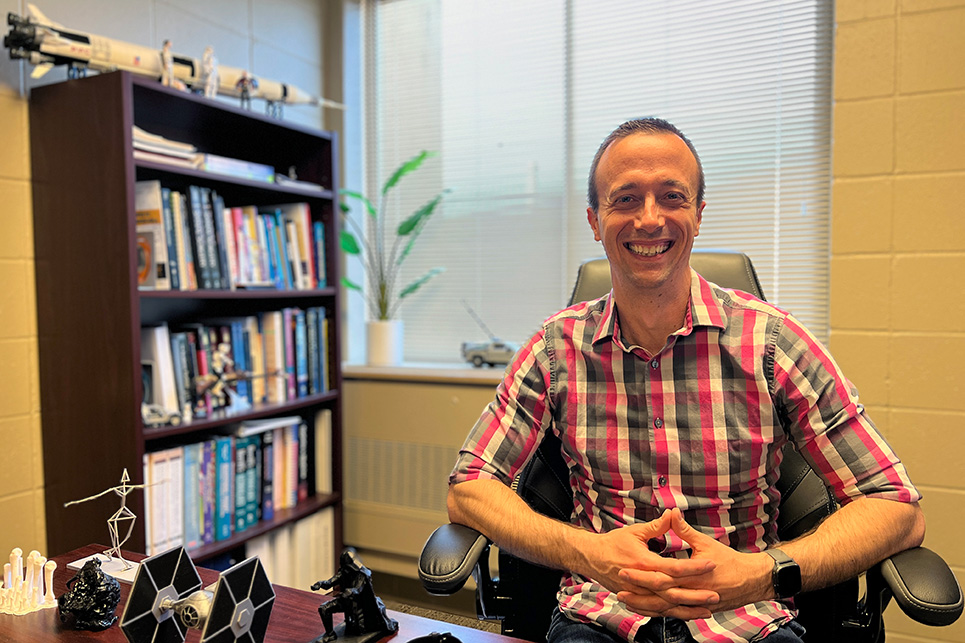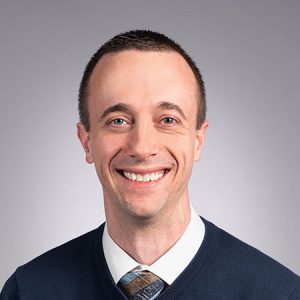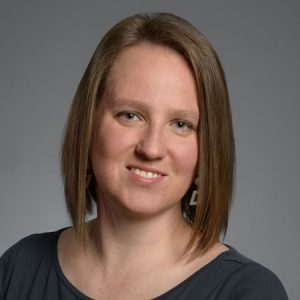April 19, 2024
Story by Ryan Gauthier

The harsh reality of ALS, or amyotrophic lateral sclerosis, is that every patient diagnosed with the neurodegenerative disease eventually dies from it. A team of researchers at the University of Missouri is using a system of advanced sensors to detect the progression of ALS — and hopes to keep patients healthier, happier and in their homes longer.
Bill Janes, an assistant professor with the Department of Occupational Therapy, is the principal investigator on a $400,000 grant from the ALS Association designed to create a notification system capable of alerting trusted caregivers as soon as a fall or other health change is detected. Janes said the project will build on his own research and the work of eldercare research collaborators across Mizzou.
“There are some key factors that we can watch for to potentially predict before people get really sick,” Janes said. “The hope is that down the road, we can intervene and try to slow things down.”
By placing a complex system of sensors — adapted for people living with ALS over the past two years through a $500,000 grant from the Department of Defense — throughout a participant’s home, the research team aims to spot warning signs that might indicate the progression of the disease. The latest stage of the research will move the project beyond Columbia to the entire state of Missouri, with a particular focus on ways to notify a patient’s trusted contact and health care team when issues are detected.
Janes got involved with the Mizzou faculty research group after observing patients in the MU Health Care ALS clinic sporadically miss their quarterly appointments without any insight given to their care team about why they were absent. When the team realized they were in the hospital or deceased, he knew there had to be a way to close the gap between health status changes and the health care providers.
Janes knew that Rachel Proffitt, an associate professor of OT, was collaborating with Marjorie Skubic, Curators’ Distinguished Professor Emerita with the College of Engineering, to use a similar sensor platform for older adults recovering from stroke. He reached out to his colleagues to see whether the technology could also benefit patients with ALS.
“It seemed like such a natural connection,” Janes said. “We have a population that needs that kind of monitoring, but we can’t do it if they’re only coming to see us quarterly. This system lets us monitor these patients’ health 24/7.”
Eventually, Janes said the hope is for the system to compile all available data on a patient and inform their health care providers when interventions might be helpful.
“If their gait speed is slowing, for example, that might indicate physical therapy needs to get involved,” he said. “If their oxygen saturation is dropping off, we could call in respiratory therapy to see if they might need a medication adjustment or something similar.”
Missourians living with ALS who are interested in getting involved in the study can consult with their health care provider and the ALS Association to learn more. Janes said ALS Association-certified clinics throughout the state are identifying patients who might be a good fit and referring them to the project.
While it’s too early to say whether the system can save lives or improve outcomes for people who have ALS, Janes said he hopes the technology eventually makes it easier for those folks to continue to lead fulfilling lives.
“We want to give people more peace of mind so that they can live longer, healthier, more comfortable lives — and feel safer during that time,” he said.

